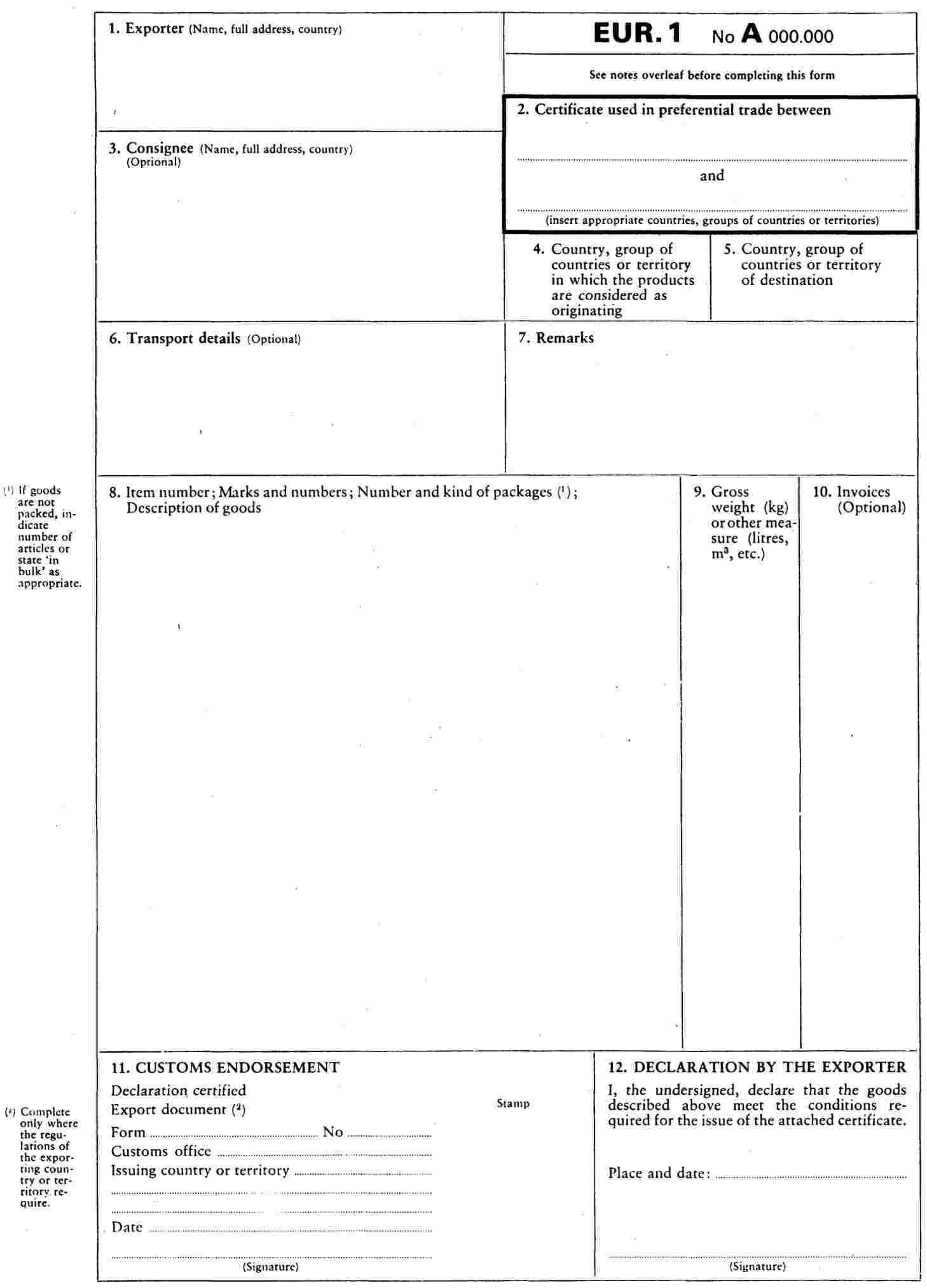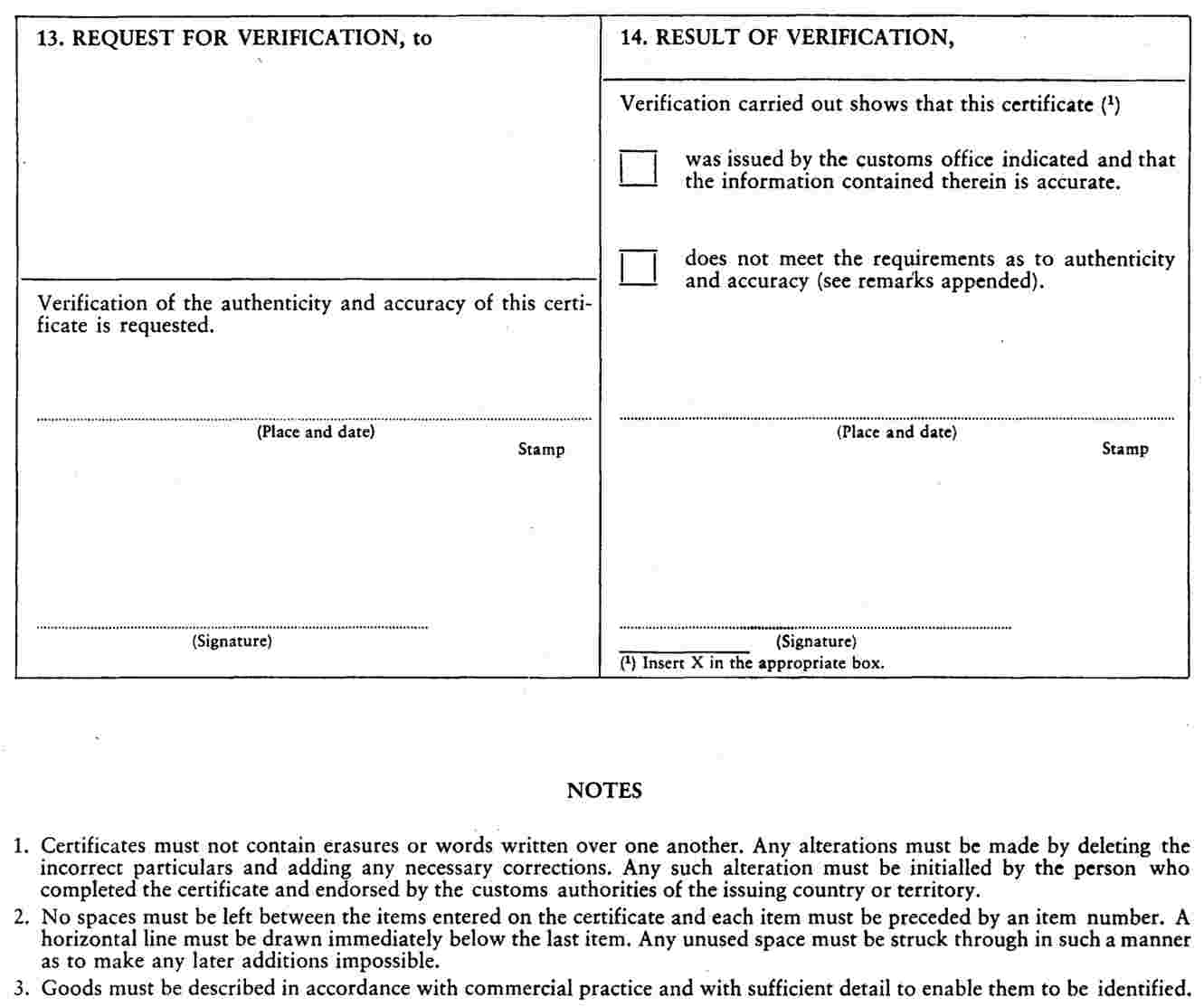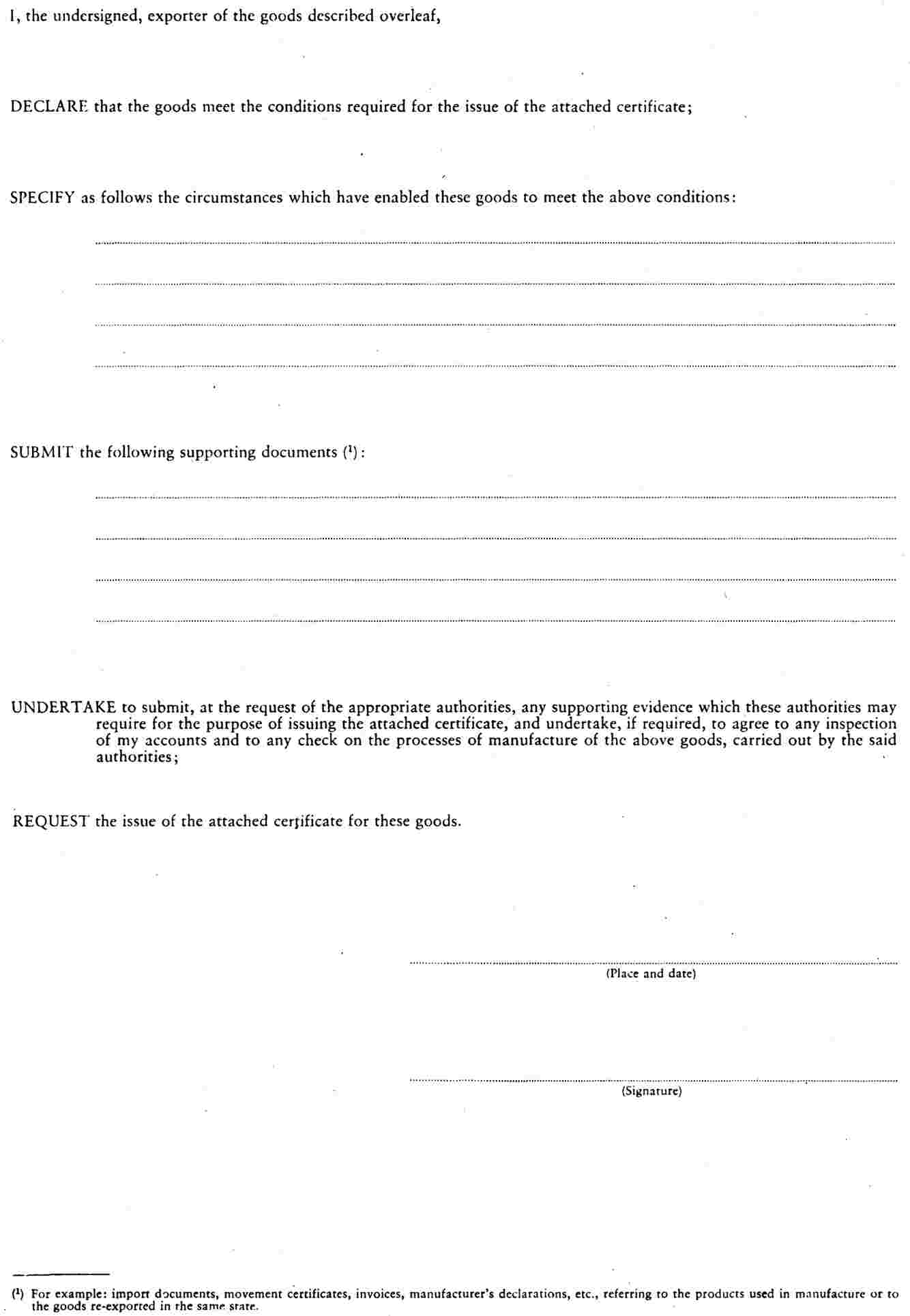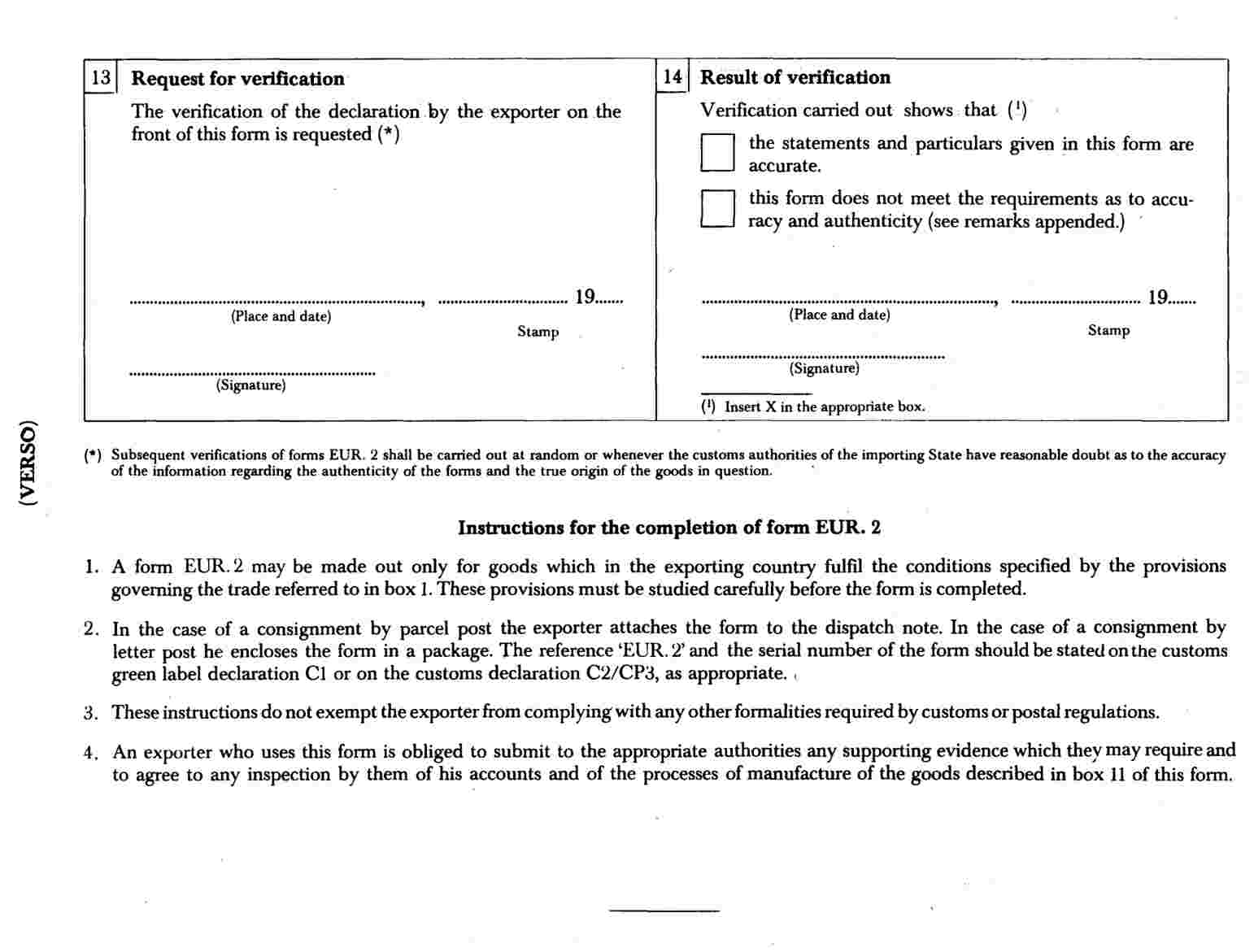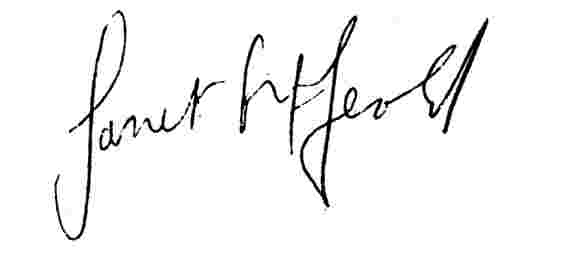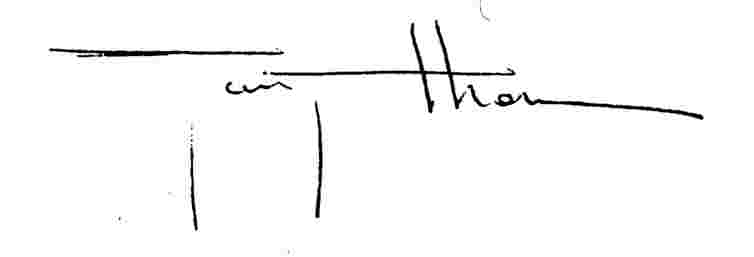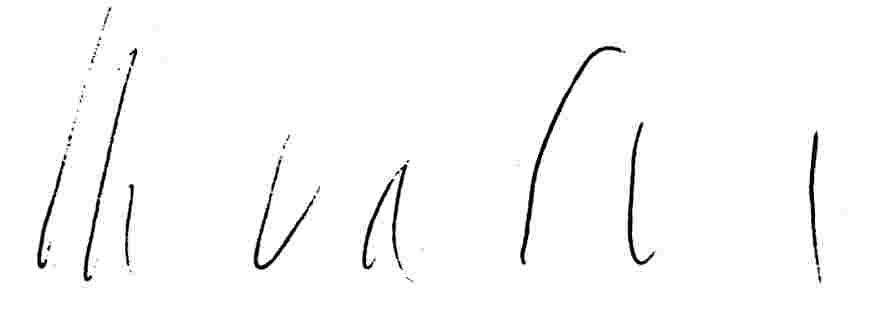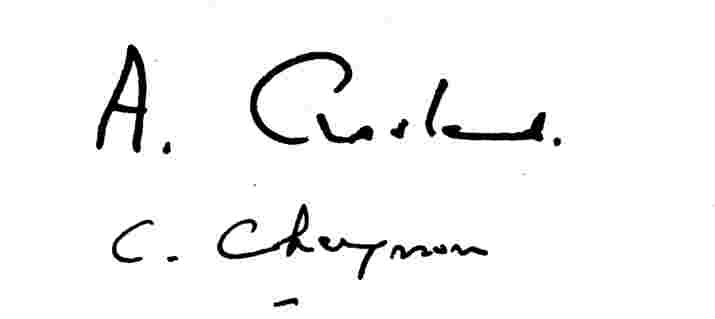|
Products obtained
|
Working or processing that does not confer the status of originating products
|
Working or processing that confers the status of originating products when the following conditions are met
|
|
CCT heading No
|
Description
|
|
02.06
|
Meat and edible meat offals (except poultry liver), salted, in brine, dried or smoked
|
Salting, placing in brine, drying or smoking of meat and edible meat offals of heading Nos 02.01 and 02.04
|
|
|
03.02
|
Fish, dried, salted or in brine, smoked fish, whether or not cooked before or during the smoking process
|
Drying, salting, placing in brine; smoking of fish, whether cooked or not
|
|
|
04.02
|
Milk and cream, preserved, concentrated or sweetened
|
Preserving, concentrating, or adding sugar to milk or cream of heading No 04.01
|
|
|
04.03
|
Butter
|
Manufacture from milk or cream
|
|
|
04.04
|
Cheese and curd
|
Manufacture from products of heading Nos 04.01, 04.02 and 04.03
|
|
|
07.02
|
Vegetables (whether or not cooked), preserved by freezing
|
Freezing of vegetables
|
|
|
07.03
|
Vegetables, provisionally preserved in brine, in sulphur water or in other preservative solutions, but not specially prepared for immediate consumption
|
Placing in brine or in other solutions of vegetables of heading No 07.01
|
|
|
07.04
|
Dried, dehydrated or evaporated vegetables, whole, cut, sliced, broken or in powder, but not further prepared
|
Drying, dehydration, evaporation, cutting, grinding, powdering of vegetables of heading Nos 07.01 to 07.03
|
|
|
08.10
|
Fruit (whether or not cooked), preserved by freezing, not containing added sugar
|
Freezing of fruit
|
|
|
08.11
|
Fruit provisionally preserved (for example, by sulphur dioxide gas, in brine, in sulphur water or in other preservative solutions), but unsuitable in that state for immediate consumption
|
Placing in brine or in other solutions of fruit of heading Nos 08.01 to 08.09
|
|
|
08.12
|
Fruit, dried, other than that falling within heading No 08.01, 08.02, 08.03, 08.04 or 08.05
|
Drying of fruit
|
|
|
11.01
|
Cereal flours
|
Manufacture from cereals
|
|
|
11.02
|
Cereal groats and cereal meal; other worked cereal grains (for example, rolled, flaked, polished, pearled or kibbled, but not further prepared), except husked, glazed, polished or broken rice; germ of cereals, whole, rolled, flaked or ground
|
Manufacture from cereals
|
|
|
11.03
|
Flours of the leguminous vegetables falling within heading No 07.05
|
Manufacture from dried leguminous vegetables
|
|
|
11.04
|
Flours of the fruits falling within any heading in Chapter 8
|
Manufacture from fruits of Chapter 8
|
|
|
11.05
|
Flour, meal and flakes of potato
|
Manufacture from potatoes
|
|
|
11.06
|
Flour and meal of sago and of manioc, arrowroot, salep and other roots and tubers falling within heading No 07.06
|
Manufacture from products of heading No 07.06
|
|
|
11.07
|
Malt, roasted or not
|
Manufacture from cereals
|
|
|
11.08
|
Starches; inulin
|
Manufacture from cereals of Chapter 10, or from potatoes or other products of Chapter 7
|
|
|
11.09
|
Wheat gluten, whether or not dried
|
Manufacture from wheat or wheat flours
|
|
|
15.01
|
Lard, other pigfat and poultry fat, rendered or solvent-extracted
|
Manufacture from products of heading No 02.05
|
|
|
15.02
|
Fats of bovine cattle, sheep or goats, unrendered; rendered or solvent-extracted fats (including ‘premier jus’) obtained from those unrendered fats
|
Manufacture from products of heading Nos 02.01 and 02.06
|
|
|
15.04
|
Fats and oils, of fish and marine mammals, whether or not, refined
|
Manufacture from fish or marine mammals caught by fishing vessels of third countries
|
|
|
15.06
|
Other animal oils and fats (including neat's-foot oil and fats from bones or waste)
|
Manufacture from products of Chapter 2
|
|
|
ex 15.07
|
Fixed vegetable oils, fluid or solid, crude, refined or purified, but not including Chinawood oil, myrtle-wax, Japan wax or oil of tung nuts, oleo-cocca seeds or oiticia seeds; also not including oils of a kind used in machinery or mechanical appliances or for industrial purposes other than the manufacture of edible products
|
Manufacture from products of Chapters 7 and 12
|
|
|
16.01
|
Sausages and the like, of meat, meat offal or animal blood
|
Manufacture from products of Chapter 2
|
|
|
16.02
|
Other prepared or preserved meat or meat offal
|
Manufacture from products of Chapter 2
|
|
|
16.04
|
Prepared or preserved fish, including caviar and caviar substitutes
|
Manufacture from products of Chapter 3
|
|
|
16.05
|
Crustaceans and molluscs, prepared or preserved
|
Manufacture from products of Chapter 3
|
|
|
17.02
|
Other sugars; sugar syrups; artificial honey (whether or not mixed with natural honey); caramel
|
Manufacture from any product
|
|
|
17.04
|
Sugar confectionery, not containing cocoa
|
Manufacture from other products of Chapter 17 the value of which exceeds 30% of the value of the finished product
|
|
|
17.05
|
Flavoured or coloured sugars, syrups and molasses, but not including fruit juices containing added sugar in any proportion
|
Manufacture from other products of Chapter 17 the value of which exceeds 30% of the value of the finished product
|
|
|
18.06
|
Chocolate and other food preparations containing cocoa
|
Manufacture from products of Chapter 17 the value of which exceeds 30% of the value of the finished product
|
|
|
19.01
|
Malt extract
|
Manufacture from products of heading No 11.07
|
|
|
19.02
|
Preparations of flour, meal, starch or malt extract, of a kind used as infant food or for dietetic or culinary purposes, containing less than 50% by weight of cocoa
|
Manufacture from cereals and derivatives thereof, meat and milk, or in which the value of products of Chapter 17 used exceeds 30% of the value of the finished product
|
|
|
19.03
|
Macaroni, spaghetti and similar products
|
|
Manufacture from durum wheat
|
|
19.04
|
Tapioca and sago; tapioca and sago substitutes from potato or other starches
|
Manufacture from potato starch
|
|
|
19.05
|
Prepared foods obtained by the swelling or roasting of cereals or cereal products (puffed rice, cornflakes and similar products)
|
Manufacture from any product other than of Chapter 17 (1) or in which the value of the products of Chapter 17 used exceeds 30% of the value of the finished product
|
|
|
19.06
|
Communion wafers, empty cachets of a kind suitable for pharmaceutical use, sealing wafers, rice paper, and similar products
|
Manufacture from products of Chapter 11
|
|
|
19.07
|
Bread, ships' biscuits and other ordinary bakers' wares, not containing added sugar, honey, eggs, fats, cheese or fruit
|
Manufacture from products of Chapter 11
|
|
|
19.08
|
Pastry, biscuits, cakes and other fine bakers' wares, whether or not containing cocoa in any proportion
|
Manufacture from products of Chapter 11
|
|
|
20.01
|
Vegetables and fruit prepared or preserved by vinegar or acetic acid, with or without sugar, whether or not containing salt, spices or mustard
|
Preserving vegetables, fresh or frozen or preserved temporarily or preserved in vinegar
|
|
|
20.02
|
Vegetables prepared or preserved otherwise than by vinegar or acetic acid
|
Preserving vegetables fresh or frozen
|
|
|
20.03
|
Fruit preserved by freezing, containing added sugar
|
Manufacture from products of Chapter 17 of which the value exceeds 30% of the value of the finished product
|
|
|
20.04
|
Fruits, fruit-peel and parts of plants, preserved by sugar (drained, glace or crystallized)
|
Manufacture from products of Chapter 17 of which the value exceeds 30% of the value of the finished product
|
|
|
ex 20.05
|
Jams, fruit jellies, marmalades, fruit purées and fruit pastes, being cooked preparations, containing added sugar
|
Manufacture from products of Chapter 17 of which the value exceeds 30% of the value of the finished product
|
|
|
20.06
|
Fruit otherwise prepared or preserved, whether or not containing added sugar or spirit:
|
|
|
|
|
|
Manufacture, without added sugar or spirit, in which the value of the constituent ‘originating products’ of heading Nos 08.01, 08.05 and 12.01, represents at least 60% of the value of the manufactured product
|
|
|
Manufactured from products of Chapter 17 of which the value exceeds 30% of the value of the finished product
|
|
|
ex 20.07
|
Fruit juices (including grape must), whether or not containing added sugar, but unfermented and not containing spirit
|
Manufacture from products of Chapter 17 of which the value exceeds 30% of the value of the finished product
|
|
|
ex 21.01
|
Roasted chicory and extracts thereof
|
Manufacture from chicory roots, fresh or dried
|
|
|
21.05
|
Soups and broths in liquid, solid or powder forms; homogenized food preparations
|
Manufacture from products of heading No 20.02
|
|
|
22.02
|
Lemonade, flavoured spa waters and flavoured aerated waters, and other non-alcoholic beverages, not including fruit and vegetable juices falling within heading No 20.07
|
Manufacture from fruit juices (2) or in which the value of products of Chapter 17 used exceeds 30% of the value of the finished product
|
|
|
22.06
|
Vermouths, and other wines of fresh grapes flavoured with aromatic extracts
|
Manufacture from products of heading No 08.04, 20.07, 22.04 or 22.05
|
|
|
22.08
|
Ethyl alcohol or neutral spirits, undenatured, of a strength of 80o or higher; denatured spirits (including ethyl alcohol and neutral spirits) of any strength
|
Manufacture from products of heading No 08.04, 20.07, 22.04 or 22.05
|
|
|
22.09
|
Spirits (other than those of heading No 22.08); liqueurs and other spirituous beverages; compound alcoholic preparations (known as ‘concentrated extracts’) for the manufacture of beverages
|
Manufacture from products of heading No 08.04, 20.07, 22.04 or 22.05
|
|
|
22.10
|
Vinegar and substitutes for vinegar
|
Manufacture from products of heading No 08.04, 20.07, 22.04 or 22.05
|
|
|
ex 23.03
|
Residues from the manufacture of maize starch (excluding concentrated steeping liquors), of a protein content, calculated on the dry product, exceeding 40% by weight
|
Manufacture from maize or maize flour
|
|
|
23.04
|
Oil cake and other residues (except dregs) resulting from the extraction of vegetable oils
|
Manufacture from various products
|
|
|
23.07
|
Sweetened forage; other preparations of a kind used in animal feeding
|
Manufacture from cereals and derived products, meat, milk, sugar and molasses
|
|
|
ex 24.02
|
Cigarettes, cigars, smoking tobacco
|
|
Manufacture from products of heading No 24.01 of which at least 70 % by quantity are ‘originating products’
|
|
ex 28.38
|
Aluminium sulphate
|
|
Manufacture in which the value of the products used does not exceed 50% of the value of the finished product
|
|
30.03
|
Medicaments (including veterinary medicaments)
|
|
Manufacture in which the value of the products used does not exceed 50% of the value of the finished product
|
|
31.05
|
Other fertilizers; goods of the present Chapter in tablets, lozenges and similar prepared forms or in packings of a gross weight not exceeding 10 kg
|
|
Manufacture in which the value of the products used does not exceed 50% of the value of the finished product
|
|
32.06
|
Colour lakes
|
Manufacture from materials of heading No 32.04 or 32.05 (3)
|
|
|
32.07
|
Other colouring matter; inorganic products of a kind used as luminophores
|
Mixing of oxides or salts of Chapter 28 with extenders such as barium sulphate, chalk barium carbonate and satin white (3)
|
|
|
33.05
|
Aqueous distillates and aqueous solutions of essential oils, including such products suitable for medicinal uses
|
Manufacture from products of heading No 33.01 (3)
|
|
|
35.05
|
Dextrins and dextrin glues; soluble or roasted starches; starch glues
|
|
Manufacture from maize or potatoes
|
|
37.01
|
Photographic plates and film in the flat, sensitized, unexposed, of any material other than paper, paperboard or cloth
|
Manufacture from products of heading No 37.02 (4)
|
|
|
37.02
|
Film in rolls, sensitized, unexposed, perforated or not
|
Manufacture from products of heading No 37.01 (4)
|
|
|
37.04
|
Sensitized plates and film, exposed but not developed, negative or positive
|
Manufacture from products of heading No 37.01 or 37.02 (4)
|
|
|
38.11
|
Disinfectants, insecticides, fungicides, weed-killers, anti-sprouting products, rat poisons and similar products, put up in forms or packings for sale by retail or as preparations or as articles (for example, sulphur-treated bands, wicks and candles, fly-papers)
|
|
Manufacture in which the value of the products used does not exceed 50% of the value of the finished product
|
|
38.12
|
Prepared glazings, prepared dressings and prepared mordants, of a kind used in the textile, paper, leather or like industries
|
|
Manufacture in which the value of the products used does not exceed 50% of the value of the finished product
|
|
38.13
|
Pickling preparations for metal surfaces; fluxes and other auxiliary preparations for soldering, brazing or welding; soldering, brazing or welding powders and pastes consisting of metal and other materials; preparations of a kind used as cores or coatings for welding rods and electrodes
|
|
Manufacture in which the value of the products used does not exceed 50% of the value of the finished product
|
|
ex 38.14
|
Anti-knock preparations, oxidation inhibitors, gum inhibitors, viscosity improvers, anti-corrosive preparations and similar prepared additives for mineral oils, excluding prepared additives for lubricants
|
|
Manufacture in which the value of the products used does not exceed 50% of the value of the finished product
|
|
38.15
|
Prepared rubber accelerators
|
|
Manufacture in which the value of the products used does not exceed 50% of the value of the finished product
|
|
38.17
|
Preparations and charges for fire-extinguishers; charged fire-extinguishing grenades
|
|
Manufacture in which the value of the products used does not exceed 50% of the value of the finished product
|
|
38.18
|
Composite solvents and thinners for varnishes and similar products
|
|
Manufacture in which the value of the products used does not exceed 50% of the value of the finished product
|
|
ex 38.19
|
Chemical products and preparations of the chemical or allied industries (including those consisting of mixtures of natural products), not elsewhere specified or included; residual products of the chemical or allied industries, not elsewhere specified or included, excluding:
|
—
|
Fusel oil and Dippel's oil;
|
|
—
|
Naphthenic acids and their non-water-soluble salts, esters of naphthenic acids;
|
|
—
|
Sulphonaphthenic acids and their non-water-soluble salts; esters of sulphonaphthenic acids;
|
|
—
|
Petroleum sulphonates, excluding petroleum sulphonates of alkali metals, of ammonium or of ethanolamines, thiophenated sulphonic acids of oils obtained from bituminous minerals, and their salts;
|
|
—
|
Mixed alkylbenzenes and mixed alkylnaphthalenes;
|
|
—
|
Getters for vacuum tubes;
|
|
—
|
Refractory cements or mortars and similar preparations;
|
|
—
|
Alkaline iron oxide for the purification of gas;
|
|
—
|
Carbon (excluding that in artificial graphite of heading No 38.01) of metallo-graphite or other compounds, in the form of small plates, bars or other semi-manufactures
|
|
—
|
Sorbitol other than sorbitol of heading No 29.04
|
|
|
Manufacture in which the value of the products used does not exceed 50% of the value of the finished product
|
|
ex 39.02
|
Polymerization products
|
|
Manufacture in which the value of the products used does not exceed 50 % of the value of the finished product
|
|
39.07
|
Articles of materials of the kinds described in heading Nos 39.01 to 39.06
|
|
Manufacture in which the value of the products used does not exceed 50% of the value of the finished product
|
|
40.05
|
Plates, sheets and strip, of unvulcanized natural or synthetic rubber, other than smoked sheets and crepe sheets of heading No 40.01 or 40.02; granules of unvulcanized natural or synthetic rubber compounded ready for vulcanization; unvulcanized natural or synthetic rubber, compounded before or after coagulation either with carbon black (with or without the addition of mineral oil) or with silica (with or without the addition of mineral oil), in any form, of a kind known as masterbatch
|
|
Manufacture in which the value of the products used does not exceed 50% of the value of the finished product
|
|
41.08
|
Patent leather and imitation patent leather; metallized leather
|
|
Varnishing or metallizing of leather of heading Nos 41.02 to 41.07 (other than skin leather of crossed Indian sheep and of Indian goat or kid, not further prepared than vegetable tanned, or if otherwise prepared obviously unsuitable for immediate use in the manufacture of leather articles) in which the value of the skin leather used does not exceed 50% of the value of the finished product
|
|
43.03
|
Articles of furskin
|
Making up from furskin in plates, crosses and similar forms (heading No ex 43.02) (5)
|
|
|
44.21
|
Complete wooden packing cases, boxes, crates, drums and similar packings
|
|
Manufacture from boards not cut to size
|
|
45.03
|
Articles of natural cork
|
|
Manufacture from products of heading No 45.01
|
|
48.06
|
Paper and paperboard, ruled, lined or squared, but not other-wise printed, in rolls or sheets
|
|
Manufacture from paper pulp
|
|
48.14
|
Writing blocks, envelopes, letter cards, plain postcards, correspondence cards; boxes, pouches, wallets and writing compendiums, of paper or paperboard, containing only an assortment of paper stationery
|
|
Manufacture in which the value of the products used does not exceed 50% of the value of the finished product
|
|
48.15
|
Other paper and paperboard, cut to size or shape
|
|
Manufacture from paper pulp
|
|
48.16
|
Boxes, bags and other packing containers, of paper or paper-board
|
|
Manufacture in which the value of the products used does not exceed 50% of the value of the finished product
|
|
49.09
|
Picture postcards, Christmas and other picture greeting cards, printed by any process, with or without trimmings
|
Manufacture from products of heading No 49.11
|
|
|
49.10
|
Calendars of any kind, of paper or paperboard, including calendar blocks
|
Manufacture from products of heading No 49.11
|
|
|
50.04 (6)
|
Silk yarn, other than yarn of noil or other waste silk, not put up for retail sale
|
|
Manufacture from products other than those of heading No 50.04
|
|
50.05 (6)
|
Yarn spun from silk waste other than noil, not put up for retail sale
|
|
Manufacture from products of heading No 50.03
|
|
50.06 (6)
|
Yarn spun from noil silk, not put up for retail sale
|
|
Manufacture from products of heading No 50.03
|
|
50.07 (6)
|
Silk yarn and yarn spun from noil or other waste silk, put up for retail sale
|
|
Manufacture from products of heading Nos 50.01 to 50.03
|
|
ex 50.08 (6)
|
Imitation catgut of silk
|
|
Manufacture from products of heading No 50.01 or from products of heading No 50.03 neither carded nor combed
|
|
50.09 (7)
|
Woven fabrics of silk or of waste silk other than noil
|
|
Manufacture from products of heading No 50.02 or 50.03
|
|
50.10 (7)
|
Woven fabrics of noil silk
|
|
Manufacture from products of heading No 50.02 or 50.03
|
|
51.01 (8)
|
Yarn of man-made fibres (continuous), not put up for retail sale
|
|
Manufacture from chemical products or textile pulp
|
|
51.02 (8)
|
Monofil, strip (artificial straw and the like) and imitation catgut, of man-made fibre materials.
|
|
Manufacture from chemical products or textile pulp
|
|
51.03 (8)
|
Yarn of man-made fibres (continuous), put up for retail sale
|
|
Manufacture from chemical products or textile pulp
|
|
51.04 (7)
|
Woven fabrics of man-made fibres (continuous), including woven fabrics of monofil or strip of heading No 51.01 or 51.02
|
|
Manufacture from chemical products or textile pulp
|
|
52.01 (8)
|
Metallized yarn, being textile yarn spun with metal or covered with metal by any process
|
|
Manufacture from chemical products, from textile pulp or from natural textile fibres, discontinuous man-made fibres or their waste, neither carded nor combed
|
|
52.02 (7)
|
Woven fabrics of metal thread or of metallized yarn, of a kind used in articles of apparel, as furnishing fabrics or the like
|
|
Manufacture from chemical products, from textile pulp or from natural textile fibres, discontinuous man-made fibres or their waste
|
|
53.06 (8)
|
Yarn of carded sheep's or lambs' wool (woollen yarn), not put up for retail sale
|
|
Manufacture from products of heading No 53.01 or 53.03
|
|
53.07 (8)
|
Yarn of combed sheep's or lambs' wool (worsted yarn), not put up for retail sale
|
|
Manufacture from products of heading No 53.01 or 53.03
|
|
53.08 (9)
|
Yarn of fine animal hair (carded or combed), not put up for retail sale
|
|
Manufacture from raw fine animal hair of heading No 53.02
|
|
53.09 (9)
|
Yarn of horsehair or of other coarse animal hair, not put up for retail sale
|
|
Manufacture from raw coarse animal hair of heading No 53.02 or from raw horsehair of heading No 05.03
|
|
53.10 (9)
|
Yarn of sheep's or lambs' wool, of horsehair or of other animal hair (fine or coarse), put up for retail sale
|
|
Manufacture from materials of heading Nos 05.03 and 53.01 to 53.04
|
|
53.11 (10)
|
Woven fabrics of sheep's or lambs' wool or of fine animal hair
|
|
Manufacture from materials of heading Nos 53.01 to 53.05
|
|
53.12 (10)
|
Woven fabrics of coarse animal hair other than horsehair
|
|
Manufacture from products of heading Nos 53.02 to 53.05
|
|
53.13 (10)
|
Woven fabrics of horsehair
|
|
Manufacture from horsehair of heading No 05.03
|
|
54.03 (9)
|
Flax or ramie yarn, not put up for retail sale
|
|
Manufacture either from products of heading No 54.01 neither carded nor combed or from products of heading No 54.02
|
|
54.04 (9)
|
Flax or ramie yarn, put up for retail sale
|
|
Manufacture from materials of heading No 54.01 or 54.02
|
|
54.05 (10)
|
Woven fabrics of flax or of ramie
|
|
Manufacture from materials of heading No 54.01 or 54.02
|
|
55.05 (9)
|
Cotton yarn, not put up for retail sale
|
|
Manufacture from materials of heading No 55.01 or 55.03
|
|
55.06 (9)
|
Cotton yarn, put up for retail sale
|
|
Manufacture from materials of heading No 55.01 or 55.03
|
|
55.07 (10)
|
Cotton gauze
|
|
Manufacture from materials of heading No 55.01, 55.03 or 55.04
|
|
55.08 (10)
|
Terry towelling and similar terry fabrics, of cotton
|
|
Manufacture from materials of heading No 55.01, 55.03 or 55.04
|
|
55.09 (10)
|
Other woven fabrics of cotton
|
|
Manufacture from materials of heading No 55.01, 55.03 or 55.04
|
|
56.01
|
Man-made fibres (discontinuous), not carded, combed or otherwise prepared for spinning
|
|
Manufacture from chemical products or textile pulp
|
|
56.02
|
Continuous filament tow for the manufacture of man-made fibres (discontinuous)
|
|
Manufacture from chemical products or textile pulp
|
|
56.03
|
Waste (including yarn waste and pulled or garnetted rags) of man-made fibres (continuous or discontinuous), not carded, combed or otherwise prepared for spinning
|
|
Manufacture from chemical products or textile pulp
|
|
56.04
|
Man-made fibres (discontinuous or waste), carded, combed or otherwise prepared for spinning
|
|
Manufacture from chemical products or textile pulp
|
|
56.05 (11)
|
Yarn of man-made fibres (discontinuous or waste), not put up for retail sale
|
|
Manufacture from chemical products or textile pulp
|
|
56.06 (11)
|
Yarn of man-made fibres (discontinuous or waste), put up for retail sale
|
|
Manufacture from chemical products or textile pulp
|
|
56.07 (12)
|
Woven fabrics of man-made fibres (discontinuous or waste)
|
|
Manufacture from products of heading Nos 56.01 to 56.03
|
|
57.05 (11)
|
Yarn of true hemp
|
|
Manufacture from raw true hemp
|
|
57.06 (11)
|
Yarn of jute or of other textile bast fibres of heading No 57.03
|
|
Manufacture from raw jute, jute tow or from other raw textile bast fibres of heading No 57.03
|
|
57.07 (11)
|
Yarn of other vegetable textile fibres
|
|
Manufacture from raw vegetable textile fibres of heading No 57.02 or 57.04
|
|
57.08
|
Paper yarn
|
|
Manufacture from products of Chapter 47, from chemical products, textile pulp or from natural textile fibres, discontinuous man-made fibres or their waste, neither carded nor combed
|
|
57.09 (13)
|
Woven fabrics of true hemp
|
|
Manufacture from products of heading No 57.01
|
|
57.10 (13)
|
Woven fabrics of jute or of other textile bast fabrics of heading No 57.03
|
|
Manufacture from raw jute, jute tow or from other raw textile bast fibres of heading No 57.03
|
|
57.11 (13)
|
Woven fabrics of other vegetable textile fibres
|
|
Manufacture from materials of heading No 57.02 or 57.04 or from coir yarn of heading No 57.07
|
|
57.12
|
Woven fabrics of paper yarn
|
|
Manufacture from paper, from chemical products, textile pulp or from natural textile fibres, discontinuous man-made fibres or their waste
|
|
58.01 (14)
|
Carpets, carpeting and rugs, knotted (made up or not)
|
|
Manufacture from materials of heading Nos 50.01 to 50.03, 51.01, 53.01 to 53.05, 54.01, 55.01 to 55.04, 56.01 to 56.03 or 57.01 to 57.04
|
|
58.02 (14)
|
Other carpets, carpeting, rugs, mats and matting, and ‘Kelem’, ‘Schumacks’ and ‘Karamanie’ rugs and the like (made up or not)
|
|
Manufacture from materials of heading Nos 50.01 to 50.03, 51.01, 53.01 to 53.05, 54.01, 55.01 to 55.04, 56.01 to 56.03, 57.01 to 57.04 or from coir yarn of heading No 57.07
|
|
58.04 (14)
|
Woven pile fabrics and chenille fabrics (other than terry towelling or similar terry fabrics of cotton of heading No 55.08 and fabrics of heading No 58.05)
|
|
Manufacture from materials of heading Nos 50.01 to 50.03, 53.01 to 53.05, 54.01, 55.01 to 55.04, 56.01 to 56.03, 57.01 to 57.04 or from chemical products or textile pulp
|
|
58.05 (15)
|
Narrow woven fabrics, and narrow fabrics (bolduc) consisting of warp without weft assembled by means of an adhesive, other than goods falling within heading No 58.06
|
|
Manufacture from materials of heading Nos 50.01 to 50.03, 53.01 to 53.05, 54.01, 55.01 to 55.04, 56.01 to 56.03 or 57.01 to 57.04 or from chemical products or textile pulp
|
|
58.06 (15)
|
Woven labels, badges and the like, not embroidered, in the piece, in strips or cut to shape or size
|
|
Manufacture from materials of heading Nos 50.01 to 50.03, 53.01 to 53.05, 54.01, 55.01 to 55.04, 56.01 to 56.03 or from chemical products or textile pulp
|
|
58.07 (15)
|
Chenille yarn (including flock chenille yarn), gimped yarn (other than metallized yarn of heading No 52.01 and gimped horsehair yarn); braids and ornamental trimmings in the piece; tassels, pompons and the like
|
|
Manufacture from materials of heading Nos 50.01 to 50.03, 53.01 to 53.05, 54.01, 55.01 to 55.04, 56.01 to 56.03 or from chemical products or textile pulp
|
|
58.08 (15)
|
Tulle and other net fabrics (but not including woven, knitted or crocheted fabrics), plain
|
|
Manufacture from materials of heading Nos 50.01 to 50.03, 53.01 to 53.05, 54.01, 55.01 to 55.04, 56.01 to 56.03 or from chemical products or textile pulp
|
|
58.09 (15)
|
Tulle and other net fabrics (but not including woven, knitted or crocheted fabrics), figured; hand or mechanically made lace, in the piece, in strips or in motifs
|
|
Manufacture from materials of heading Nos 50.01 to 50.03, 53.01 to 53.05, 54.01, 55.01 to 55.04, 56.01 to 56.03 or from chemical products or textile pulp
|
|
58.10
|
Embroidery, in the piece, in strips or in motifs
|
|
Manufacture in which the value of the product used does not exceed 50% of the value of finished product
|
|
59.01 (15)
|
Wadding and articles of wadding; textile flock and dust and mill neps
|
|
Manufacture either from natural fibres or from chemical products or textile pulp
|
|
59.02 (15)
|
Felt and articles of felt, whether or not impregnated or coated
|
|
Manufacture either from natural fibres or from chemical products or textile pulp
|
|
ex 59.02 (16)
|
Needled felt, whether or not impregnated or coated
|
|
Manufacture from fibre or continuous polypropylene filament of which the denomination of the filaments is less than eight denier and of which the value does not exceed 40% of the value of the finished product
|
|
59.03 (16)
|
Bonded fibre fabrics, similar bonded yarn fabrics, and articles of such fabrics, whether or not impregnated or coated
|
|
Manufacture either from natural fibres or from chemical products or textile pulp
|
|
59.04 (16)
|
Twine, cordage, ropes and cables, plaited or not
|
|
Manufacture either from natural fibres or from chemical products or textile pulp or from coir yarn of heading No 57.07
|
|
59.05 (16)
|
Nets and netting made of twine, cordage or rope, and made up fishing nets of yarn, twine, cordage or rope
|
|
Manufacture either from natural fibres or from chemical products or textile pulp or from coir yarn of heading No 57.07
|
|
59.06 (16)
|
Other articles made from yarn, twine, cordage, rope or cables, other than textile fabrics and articles made from such fabrics
|
|
Manufacture either from natural fibres or from chemical products or textile pulp or from coir yarn of heading No 57.07
|
|
59.07
|
Textile fabrics coated with gum or amylaceous substances of a kind used for the outer covers of books and the like; tracing cloth; prepared painting canvas; buckram and similar fabrics for hat foundations and similar uses
|
|
Manufacture from yarn
|
|
59.08
|
Textile fabrics impregnated, coated, covered or laminated with preparations of cellulose derivatives or of other artificial plastic materials
|
|
Manufacture from yarn
|
|
59.09
|
Textile fabrics coated or impregnated with oil or preparations with a basis of drying oil
|
|
Manufacture from yarn
|
|
59.10 (16)
|
Linoleum and materials prepared on a textile base in a similar manner to linoleum, whether or not cut to shape or of a kind used as floor coverings; floor coverings consisting of a coating applied on a textile base, cut to shape or not
|
|
Manufacture either from yarn or from textile fibres
|
|
59.11
|
Rubberized textile fabrics, other than rubberized knitted or crocheted goods
|
|
Manufacture from yarn
|
|
59.12
|
Textile fabrics otherwise impregnated or coated; painted canvas being theatrical scenery, studio backcloths or the like
|
|
Manufacture from yarn
|
|
59.13 (17)
|
Elastic fabrics and trimmings (other than knitted or crocheted goods) consisting of textile materials combined with rubber threads
|
|
Manufacture from single yarn
|
|
59.15 (17)
|
Textile hosepiping and similar tubing, with or without lining, armour or accessories of other materials
|
|
Manufacture from materials of heading Nos 50.01 to 50.03, 53.01 to 53.05, 54.01, 55.01 to 55.04, 56.01 to 56.03 or 57.01 to 57.04 or from chemical products or textile pulp
|
|
59.16 (17)
|
Transmission, conveyor or elevator belts or belting, of textile material, whether or not strengthened with metal or other material
|
|
Manufacture from materials of heading Nos 50.01 to 50.03, 53.01 to 53.05, 54.01, 55.01 to 55.04, 56.01 to 56.03 or 57.01 to 57.04 or from chemical products or textile pulp
|
|
59.17 (17)
|
Textile fabrics and textile articles, of a kind commonly used in machinery or plant
|
|
Manufacture from materials of heading Nos 50.01 to 50.03, 53.01 to 53.05, 54.01, 55.01 to 55.04, 56.01 to 56.03 or 57.01 to 57.04 or from chemical products or textile pulp
|
|
ex Chapter 60 (17)
|
Knitted and crocheted goods, excluding knitted or crocheted goods obtained by sewing or by the assembly of pieces of knitted or crocheted goods (cut or obtained directly to shape)
|
|
Manufacture from natural fibres, carded or combed, from materials of heading Nos 56.01 to 56.03, from chemical products or textile pulp
|
|
ex 60.02
|
Gloves, mittens and mitts, knitted or crocheted, not elastic or rubberized, obtained by sewing or by the assembly of pieces of knitted or crocheted goods (cut or obtained directly to shape)
|
|
Manufacture from yarn (18)
|
|
ex 60.03
|
Stockings, under stockings, socks, anklesocks, sockettes and the like, knitted or crocheted, not elastic or rubberized, obtained by sewing or by the assembly of pieces of knitted or crocheted goods (cut or obtained directly to shape)
|
|
Manufacture from yarn (19)
|
|
ex 60.04
|
Under garments, knitted or crocheted, not elastic or rubberized, obtained by sewing or by the assembly of pieces of knitted or crocheted goods (cut or obtained directly to shape)
|
|
Manufacture from yarn (19)
|
|
ex 60.05
|
Outer garments and other articles, knitted or crocheted, not elastic or rubberized, obtained by sewing or by the assembly of pieces of knitted or crocheted goods (cut or obtained directly to shape)
|
|
Manufacture from yarn (19)
|
|
ex 60.06
|
Other articles, knitted or crocheted, elastic or rubberized (including elastic knee-caps and elastic, stockings), obtained by sewing or by the assembly of pieces of knitted or crocheted goods (cut or obtained directly to shape)
|
|
Manufacture from yarn (19)
|
|
61.01
|
Men's and boys' outer garments
|
|
Manufacture from yarn (19)
(20)
|
|
ex 61.01
|
Fire resistant equipment of cloth covered by foil of aluminized polyester
|
|
Manufacture from uncoated cloth of which the value does not exceed 40% of the value of the finished product (19)
(20)
|
|
ex 61.02
|
Women's, girls' and infants' outer garments, not embroidered
|
|
Manufacture from yarn (19)
(20)
|
|
ex 61.02
|
Fire resistant equipment of cloth covered by foil of aluminized polyester
|
|
Manufacture from uncoated cloth of which the value does not exceed 40% of the value of the finished product (19)
(20)
|
|
ex 61.02
|
Women's, girls' and infants' outer garments, embroidered
|
|
Manufacture from fabrics, not embroidered, the value of which does not exceed 40 % of the value of the finished product (19)
|
|
61.03
|
Men's and boys' under garments, including collars, shirt fronts and cuffs
|
|
Manufacture from yarn (21)
(22)
|
|
61.04
|
Women's, girls' and infants' under garments
|
|
Manufacture from yarn (21)
(22)
|
|
ex 61.05
|
Handkerchiefs, not embroidered
|
|
Manufacture from unbleached single yarn (21)
(22)
(23)
|
|
ex 61.05
|
Handkerchiefs, embroidered
|
|
Manufacture from fabrics, not embroidered, the value of which does not exceed 40% of the value of the finished product (21)
|
|
ex 61.06
|
Shawls, scarves, mufflers, mantillas, veils and the like, not embroidered
|
|
Manufacture from unbleached single yarn of natural textile fibres or discontinuous man-made fibres or their waste, or from chemical products or textile pulp (21)
(22)
|
|
ex 61.06
|
Shawls, scarves, mufflers, mantillas, veils and the like, embroidered
|
|
Manufacture from fabrics, not embroidered, the value of which does not exceed 40% of the value of the finished product (21)
|
|
61.07
|
Ties, bow ties and cravats
|
|
Manufacture from yarn (21)
(22)
|
|
ex 61.08
|
Collars, tuckers, fallals, bodice-fronts, jabots, cuffs, flounces, yokes and similar accessories and trimmings for women's and girls' garments, not embroidered
|
|
Manufacture from yarn (21)
(22)
|
|
ex 61.08
|
Collars, tuckers, fallals, bodice-fronts, jabots, cuffs, flounces, yokes and similar accessories and trimmings for women's and girls' garments, embroidered
|
|
Manufacture from fabrics, not embroidered, the value of which does not exceed 40% of the value of the finished product (21)
|
|
61.09
|
Corsets, corset-belts, suspender-belts, brassières, braces, suspenders, garters and the like (including such articles of knitted or crocheted fabric), whether or not elastic
|
|
Manufacture from yarn (21)
(22)
|
|
61.10
|
Gloves, mittens, mitts, stockings, socks and sockettes, not being knitted or crocheted goods
|
|
Manufacture from yarn (21)
(22)
|
|
ex 61.10
|
Fire resistant equipment of cloth covered by foil of aluminized polyester
|
|
Manufacture from uncoated cloth of which the value does not exceed 40% of the value of the finished product (24)
(25)
|
|
61.11
|
Made up accessories for articles of apparel (for example, dress shields, shoulder and other pads, belts, muffs, sleeve protectors, pockets)
|
|
Manufacture from yarn (24)
(25)
|
|
62.01
|
Travelling rugs and blankets
|
|
Manufacture from unbleached yarn of Chapters 50 to 56 (25)
(26)
|
|
ex 62.02
|
Bed linen, table linen, toilet linen and kitchen linen; curtains and other furnishing articles; not embroidered
|
|
Manufacture from unbleached single yarn (25)
(26)
|
|
ex 62.02
|
Bed linen, table linen, toilet linen and kitchen linen; curtains and other furnishing articles; embroidered
|
|
Manufacture from fabrics, not embroidered, the value of which does not exceed 40% of the value of the finished product
|
|
62.03
|
Sacks and bags, of a kind used for the packing of goods
|
|
Manufacture from chemical products, textile pulp or from natural textile fibres, discontinuous man-made fibres or their waste (25)
(26)
|
|
62.04
|
Tarpaulins, sails, awnings, sun-blinds, tents and camping goods
|
|
Manufacture from single unbleached yarn (25)
(26)
|
|
62.05
|
Other made up textile articles (including dress patterns)
|
|
Manufacture in which the value of the products used does not exceed 40% of the value of the finished product
|
|
64.01
|
Footwear with outer soles and uppers of rubber or artificial plastic material
|
Manufacture from assemblies of uppers affixed to inner soles or to other sole components, but without outer soles, of any material except metal
|
|
|
64.02
|
Footwear with outer soles of leather or composition leather; footwear (other than footwear falling within heading No 64.01) with outer soles of rubber or artificial plastic material
|
Manufacture from assemblies of uppers affixed to inner soles or to other sole components, but without outer soles, of any material except metal
|
|
|
64.03
|
Footwear with outer soles of wood or cork
|
Manufacture from assemblies of uppers affixed to inner soles or to other sole components, but without outer soles, of any material except metal
|
|
|
64.04
|
Footwear with outer soles of other materials
|
Manufacture from assemblies of uppers affixed to inner soles or to other sole components, but without outer soles, of any material except metal
|
|
|
65.03
|
Felt hats and other felt headgear, being headgear made from the felt hoods and plateaux falling within heading No 65.01, whether or not lined or trimmed
|
|
Manufacture from textile fibres
|
|
65.05
|
Hats and other headgear (including hair nets), knitted or crocheted, or made up from lace, felt or other textile fabric in the piece (but not from strips), whether or not lined or trimmed
|
|
Manufacture either from yarn or from textile fibres
|
|
66.01
|
Umbrellas and sunshades (including walking-stick umbrellas, umbrella tents, and garden and similar umbrellas)
|
|
Manufacture in which the value of the products used does not exceed 50% of the value of the finished product
|
|
ex 70.07
|
Cast, rolled, drawn or blown glass (including flashed or wired glass) cut to shape other than rectangular shape, or bent or otherwise worked (for example, edge worked or engraved) whether or not surface ground or polished; multiple-walled insulating glass
|
Manufacture from drawn, cast or rolled glass of heading Nos 70.04 to 70.06
|
|
|
70.08
|
Safety glass consisting of toughened or laminated glass, shaped or not
|
Manufacture from drawn, cast or rolled glass of heading Nos 70.04 to 70.06
|
|
|
70.09
|
Glass mirrors (including rear-view mirrors), unframed, framed or backed
|
Manufacture from drawn, cast or rolled glass of heading Nos 70.04 to 70.06
|
|
|
71.15
|
Articles consisting of, or incorporating, pearls, precious or semi-precious stones (natural, synthetic or reconstructed)
|
|
Manufacture in which the value of the products used does not exceed 50% of the value of the finished product (27)
|
|
73.07
|
Blooms, billets, slabs and sheet-bars (including tinplate bars) of iron or steel; pieces roughly shaped by forging, of iron or steel
|
Manufacture from products of heading No 73.06
|
|
|
73.08
|
Iron or steel coils re-rolling
|
Manufacture from products of heading No 73.07
|
|
|
73.09
|
Universal plates of iron or steel
|
Manufacture from products of heading No 73.07 or 73.08
|
|
|
73.10
|
Bars and rods (including wire rod), of iron or steel, hot-rolled, forged, extruded, cold-formed or cold-finished (including precision-made); hollow mining drill steel
|
Manufacture from products of heading No 73.07
|
|
|
73.11
|
Angles, shapes and sections, of iron or steel, hot-rolled, forged, extruded, cold-formed or cold-finished; sheet piling of iron or steel, whether or not drilled, punched or made from assembled elements
|
Manufacture from products of heading Nos 73.07 to 73.10, 73.12 or 73.13
|
|
|
73.12
|
Hoop and strip, of iron or steel, hot-rolled or cold-rolled
|
Manufacture from products of heading Nos 73.07 to 73.09 or 73.13
|
|
|
73.13
|
Sheets and plates, of iron or steel, hot-rolled or cold-rolled
|
Manufacture from products of heading Nos 73.07 to 73.09
|
|
|
73.14
|
Iron or steel wire, whether or not coated, but not insulated
|
Manufacture from products of heading No 73.10
|
|
|
73.16
|
Railway and tramway track construction material of iron or steel, the following: rails, check-rails, switch blades, crossings (or frogs), crossing pieces, point rods, rack rails, sleepers, fish-plates, chairs, chair wedges, sole plates (base plates), rail clips, bed-plates, ties and other material specialized for joining or fixing rails
|
|
Manufacture from products of heading No 73.06
|
|
73.18
|
Tubes and pipes and blanks therefor, of iron (other than of cast iron) or steel, excluding high-pressure hydro-electric conduits
|
|
Manufacture from products of heading Nos 73.06 and 73.07 or heading No 73.15 in the forms specified in heading Nos 73.06 and 73.07
|
|
74.03
|
Wrought bars, rods, angles, shapes and sections, of copper; copper wire
|
|
Manufacture in which the value of the products used does not exceed 50% of the value of the finished product (28)
|
|
74.04
|
Wrought plates, sheets and strip, of copper
|
|
Manufacture in which the value of the products used does not exceed 50% of the value of the finished product (28)
|
|
74.05
|
Copper foil (whether or not embossed, cut to shape, perforated, coated, printed, or backed with paper or other reinforcing material), of a thickness (excluding any backing) not exceeding 0·15 mm
|
|
Manufacture in which the value of the products used does not exceed 50% of the value of the finished product (28)
|
|
74.06
|
Copper powder and flakes
|
|
Manufacture in which the value of the products used does not exceed 50% of the value of the finished product (28)
|
|
74.07
|
Tubes and pipes and blanks therefor, of copper; hollow bars of copper
|
|
Manufacture in which the value of the products used does not exceed 50% of the value of the finished product (28)
|
|
74.08
|
Tube and pipe fittings (for example, joints, elbows, sockets and flanges), of copper
|
|
Manufacture in which the value of the products used does not exceed 50% of the value of the finished product (28)
|
|
74.09
|
Reservoirs, tanks, vats and similar containers, for any material (other than compressed or liquified gas), of copper, of a capacity exceeding 300 litres, whether or not lined or heat-insulated, but not fitted with mechanical or thermal equipment
|
|
Manufacture in which the value of the products used does not exceed 50% of the value of the finished product (29)
|
|
74.10
|
Stranded wire, cables, cordage, ropes, plaited bands and the like, of copper wire, but excluding insulated electric wires and cables
|
|
Manufacture in which the value of the products used does not exceed 50% of the value of the finished product (29)
|
|
74.11
|
Gauze, cloth, grill, netting, fencing, reinforcing fabric and similar materials (including endless bands), of copper wire
|
|
Manufacture in which the value of the products used does not exceed 50% of the value of the finished product (29)
|
|
74.12
|
Expanded metal, of copper
|
|
Manufacture in which the value of the products used does not exceed 50% of the value of the finished product (29)
|
|
74.13
|
Chain and parts thereof, of copper
|
|
Manufacture in which the value of the products used does not exceed 50% of the value of the finished product (29)
|
|
74.14
|
Nails, tacks, staples, hook-nails, spiked cramps, studs, spikes and drawing pins, of copper, or of iron or steel with heads of copper
|
|
Manufacture in which the value of the products used does not exceed 50% of the value of the finished product (29)
|
|
74.15
|
Bolts and nuts (including bolt ends and screw studs), whether or not threaded or tapped, and screws (including screw hooks and screw rings), of copper; rivets, cotters, cotter-pins, washers and spring washers, of copper
|
|
Manufacture in which the value of the products used does not exceed 50% of the value of the finished product (29)
|
|
74.16
|
Springs, of copper
|
|
Manufacture in which the value of the products used does not exceed 50% of the value of the finished product (29)
|
|
74.17
|
Cooking and heating apparatus of a kind used for domestic purposes, not electrically operated, and parts thereof, of copper
|
|
Manufacture in which the value of the products used does not exceed 50% of the value of the finished product (29)
|
|
74.18
|
Other articles of a kind commonly used for domestic purposes, sanitary ware for indoor use, and parts of such articles and ware, of copper
|
|
Manufacture in which the value of the products used does not exceed 50% of the value of the finished product (30)
|
|
74.19
|
Other articles of copper
|
|
Manufacture in which the value of the products used does not exceed 50% of the value of the finished product (30)
|
|
75.02
|
Wrought bars, rods, angles, shapes and sections, of nickel; nickel wire
|
|
Manufacture in which the value of the products used does not exceed 50% of the value of the finished product (30)
|
|
75.03
|
Wrought plates, sheets and strip, of nickel; nickel foil; nickel powders and flakes
|
|
Manufacture in which the value of the products used does not exceed 50% of the value of the finished product (30)
|
|
75.04
|
Tubes and pipes and blanks therefor, of nickel; hollow bars, and tube and pipe fittings (for example, joints, elbows, sockets and flanges), of nickel
|
|
Manufacture in which the value of the products used does not exceed 50% of the value of the finished product (30)
|
|
75.05
|
Electro-plating anodes, of nickel, wrought or unwrought, including those produced by electrolysis
|
|
Manufacture in which the value of the products used does not exceed 50% of the value of the finished product (30)
|
|
75.06
|
Other articles of nickel
|
|
Manufacture in which the value of the products used does not exceed 50% of the value of the finished product (30)
|
|
76.02
|
Wrought bars, rods, angles, shapes and sections, of aluminium; aluminium wire
|
|
Manufacture in which the value of the products used does not exceed 50% of the value of the finished product
|
|
76.03
|
Wrought plates, sheets and strip, of aluminium
|
|
Manufacture in which the value of the products used does not exceed 50% of the value of the finished product
|
|
76.04
|
Aluminium foil (whether or not embossed, cut to shape, perforated, coated, printed, or backed with paper or other reinforcing material), of a thickness (excluding any backing) not exceeding 0·20 mm
|
|
Manufacture in which the value of the products used does not exceed 50% of the value of the finished product
|
|
76.05
|
Aluminium powders and flakes
|
|
Manufacture in which the value of the products used does not exceed 50% of the value of the finished product
|
|
76.06
|
Tubes and pipes and blanks therefor, of aluminium; hollow bars of aluminium
|
|
Manufacture in which the value of the products used does not exceed 50% of the value of the finished product
|
|
76.07
|
Tube and pipe fittings (for example, joints, elbows, sockets and flanges), of aluminium
|
|
Manufacture in which the value of the products used does not exceed 50% of the value of the finished product
|
|
76.08
|
Structures, complete or incomplete, whether or not assembled, and parts of structures (for example, hangars and other buildings, bridges and bridge-sections, towers, lattice masts, roofs, roofing frameworks, door and window frames, balustrades, pillars and columns), of aluminium; plates, rods, angles, shapes, sections, tubes and the like, prepared for use in structures, of aluminium
|
|
Manufacture in which the value of the products used does not exceed 50% of the value of the finished product
|
|
76.09
|
Reservoirs, tanks, vats and similar containers, for any material (other than compressed or liquified gas), of aluminium, of a capacity exceeding 300 litres, whether or not lined or heat insulated, but not fitted with mechanical or thermal equipment
|
|
Manufacture in which the value of the products used does not exceed 50% of the value of the finished product
|
|
76.10
|
Casks, drums, cans, boxes and similar containers (including rigid and collapsible tubular containers), of aluminium, of a description commonly used for the conveyance or packing of goods
|
|
Manufacture in which the value of the products used does not exceed 50% of the value of the finished product
|
|
76.11
|
Containers of aluminium for compressed or liquified gas
|
|
Manufacture in which the value of the products used does not exceed 50% of the value of the finished product
|
|
76.12
|
Stranded wire, cables, cordage, ropes, plaited bands and the like, of aluminium wire, but excluding insulated electric wires and cables
|
|
Manufacture in which the value of the products used does not exceed 50% of the value of the finished product
|
|
76.13
|
Gauze, cloth, grill, netting, reinforcing fabric and similar materials, of aluminium wife
|
|
Manufacture in which the value of the products used does not exceed 50% of the value of the finished product
|
|
76.14
|
Expanded metal, of aluminium
|
|
Manufacture in which the value of the products used does not exceed 50% of the value of the finished product
|
|
76.15
|
Articles of a kind commonly used for domestic purposes, sanitary ware for indoor use, and parts of such articles and ware, of aluminium
|
|
Manufacture in which the value of the products used does not exceed 50% of the value of the finished product
|
|
76.16
|
Other articles of aluminium
|
|
Manufacture in which the value of the products used does not exceed 50% of the value of the finished product
|
|
77.02
|
Wrought bars, rods, angles, shapes and sections, of magnesium; magnesium wire; wrought plates, sheets and strip, of magnesium; magnesium foil; raspings and shavings of uniform size, powders and flakes, of magnesium; tubes and pipes and blanks therefor, of magnesium; hollow bars of magnesium
|
|
Manufacture in which the value of the products used does not exceed 50% of the value of the finished product
|
|
77.03
|
Other articles of magnesium
|
|
Manufacture in which the value of the products used does not exceed 50% of the value of the finished product
|
|
78.02
|
Wrought bars, rods, angles, shapes and sections, of lead; lead wire
|
|
Manufacture in which the value of the products used does not exceed 50% of the value of the finished product (31)
|
|
78.03
|
Wrought plates, sheets and strip, of lead
|
|
Manufacture in which the value of the products used does not exceed 50% of the value of the finished product (31)
|
|
78.04
|
Lead foil (whether or not embossed, cut to shape, perforated, coated, printed, or backed with paper or other reinforcing material), of a weight (excluding any backing) not exceeding 1·7 kg/m2; lead powders and flakes
|
|
Manufacture in which the value of the products used does not exceed 50% of the value of the finished product (31)
|
|
78.05
|
Tubes and pipes and blanks therefor, of lead; hollow bars and tube and pipe fittings (for example, joints, elbows, sockets, flanges and S-bends)
|
|
Manufacture in which the value of the products used does not exceed 50% of the value of the finished product (31)
|
|
78.06
|
Other articles of lead
|
|
Manufacture in which the value of the products used does not exceed 50% of the value of the finished product (32)
|
|
79.02
|
Wrought bars, rods, angles, shapes and sections, of zinc; zinc wire
|
|
Manufacture in which the value of the products used does not exceed 50% of the value of the finished product
|
|
79.03
|
Wrought plates, sheets and strip, of zinc; zinc foil; zinc powders and flakes
|
|
Manufacture in which the value of the products used does not exceed 50% of the value of the finished product
|
|
79.04
|
Tubes and pipes and blanks therefor, of zinc; hollow bars, and tube and pipe fittings (for example, joints, elbows, sockets and flanges), of zinc
|
|
Manufacture in which the value of the products used does not exceed 50% of the value of the finished product
|
|
79.05
|
Gutters, roof capping, skylight frames, and other fabricated building components, of zinc
|
|
Manufacture in which the value of the products used does not exceed 50% of the value of the finished product
|
|
79.06
|
Other articles of zinc
|
|
Manufacture in which the value of the products used does not exceed 50% of the value of the finished product
|
|
80.02
|
Wrought bars, rods, angles, shapes and sections, of tin; tin wire
|
|
Manufacture in which the value of the products used does not exceed 50% of the value of the finished product
|
|
80.03
|
Wrought plates, sheets and strip, of tin
|
|
Manufacture in which the value of the products used does not exceed 50% of the value of the finished product
|
|
80.04
|
Tin foil (whether or not embossed, cut to shape, perforated, coated, printed, or backed with paper or other reinforcing material), of a weight (excluding any backing) not exceeding 1 kg/m2; tin powders and flakes
|
|
Manufacture in which the value of the products used does not exceed 50% of the value of the finished product
|
|
80.05
|
Tubes and pipes and blanks therefor, of tin; hollow bars, and tube and pipe fittings (for example, joints, elbows, sockets and flanges), of tin
|
|
Manufacture in which the value of the products used does not exceed 50 % of the value of the finished product
|
|
82.05
|
Interchangeable tools for hand tools, for machine tools or for power-operated hand tools (for example, for pressing, stamping, drilling, tapping, threading, boring, broaching, milling, cutting, turning, dressing, morticing or screwdriving), including dies for wire drawing, extrusion dies for metal, and rock drilling bits
|
|
Working, processing or assembly in which the value of the materials and parts used does not exceed 40% of the value of the finished product (33)
|
|
82.06
|
Knives and cutting blades, for machines or for mechanical appliances
|
|
Working, processing or assembly in which the value of the materials and parts used does not exceed 40% of the value of the finished product (33)
|
|
ex Chapter 84
|
Boilers, machinery and mechanical appliances and parts thereof, excluding refrigerators and refrigerating equipment (electrical and other) (No 84.15) and sewing machines, including furniture specially designed for sewing machines (ex No 84.41)
|
|
Working, processing or assembly in which the value of the materials and parts used does not exceed 40 % of the value of the finished product
|
|
84.15
|
Refrigerators and refrigerating equipment (electrical and other)
|
|
Working, processing or assembly in which the value of the non-originating materials and parts used does not exceed 40% of the value of the finished product, and provided that at least 50% in value of the materials and parts (34) used are originating products
|
|
ex 84.41
|
Sewing machines, including furniture for sewing machines
|
|
Working, processing or assembly in which the value of the non-originating materials and parts used does not exceed 40% of the value of the finished product, and provided that:
|
(a)
|
at least 50% in value of the materials and parts (35) used for the assembly of the head (motor excluded) are originating products, and
|
|
(b)
|
the thread tension, crochet and zigzag mechanisms are originating products
|
|
|
ex Chapter 85
|
Electrical machinery and equipment; parts thereof; excluding products of heading No 85.14 or 85.15
|
|
Working, processing or assembly in which the value of the non-originating material and parts used does not exceed 40% of the value of the finished product
|
|
85.14
|
Microphones and stands therefor; loudspeakers; audio-frequency electric amplifiers
|
|
Working, processing or assembly in which the value of the non-originating materials and parts used does not exceed 40% of the value of the finished product, and provided that:
|
(a)
|
at least 50% in value of the materials and parts (35) used are originating products, and
|
|
(b)
|
the value of the non-originating transistors used does not exceed 3% of the value of the finished product (36)
|
|
|
85.15
|
Radiotelegraphic and radio-telephonic transmission and reception apparatus; radio-broadcasting and television transmission and reception apparatus (including receivers incorporating sound recorders or reproducers) and television cameras; radio navigational aid apparatus, radar apparatus and radio remote control apparatus
|
|
Working, processing or assembly in which the value of the non-originating materials and parts used does not exceed 40% of the value of the finished product, and provided that:
|
(a)
|
at least 50% in value of the materials and parts (37) used are originating products, and
|
|
(b)
|
the value of the non-originating transistors used does not exceed 3% of the value of the finished product (38)
|
|
|
Chapter 86
|
Railway and tramway locomotives, rolling-stock and parts thereof; railway and tramway track fixtures and fittings; traffic signalling equipment of all kinds (not electrically powered)
|
|
Working, processing or assembly in which the value of the materials and parts used does not exceed 40% of the value of the finished product
|
|
ex Chapter 87
|
Vehicles, other than railway or tramway rolling-stock, and parts thereof, excluding products of heading No 87.09
|
|
Working, processing or assembly in which the value of the materials and parts used does not exceed 40% of the value of the finished product
|
|
87.09
|
Motor-cycles, autocycles and cycles fitted with an auxiliary motor, with or without side-cars; side-cars of all kinds
|
|
Working, processing or assembly in which the value of the non-originating materials and parts used does not exceed 40% of the finished product, and provided that at least 50% in value of the materials and parts (37) used are originating products
|
|
ex Chapter 90
|
Optical, photographic, cinematographic, measuring, checking, precision, medical and surgical instruments and apparatus and parts thereof, excluding products of heading No 90.05, 90.07, 90.08, 90.12 or 90.26
|
|
Working, processing or assembly in which the value of the materials and parts used does not exceed 40% of the value of the finished product
|
|
90.05
|
Refracting telescopes (monocular and binocular), prismatic or not
|
|
Working, processing or assembly in which the value of the non-originating materials and parts used does not exceed 40% of the value of the finished product, and provided that at least 50% in value of the materials and parts (39) used are originating products
|
|
90.07
|
Photographic cameras; photographic flashlight apparatus
|
|
Working, processing or assembly in which the value of the non-originating materials and parts used does not exceed 40% of the value of the finished product, and provided that at least 50% in value of the materials and parts (39) used are originating products
|
|
90.08
|
Cinematographic cameras, projectors, sound recorders and sound reproducers; any combination of these articles
|
|
Working, processing or assembly in which the value of the non-originating materials and parts used does not exceed 40% of the value of the finished product, and provided that at least 50% in value of the materials and parts (39) used are originating products
|
|
90.12
|
Compound optical microscopes, whether or not provided with means for photographing or projecting the image
|
|
Working, processing or assembly in which the value of the non-originating materials and parts used does not exceed 40% of the value of the finished product, and provided that at least 50% in value of the materials and parts (39) used are originating products
|
|
90.26
|
Gas, liquid and electricity supply or production meters; calibrating meters therefor
|
|
Working, processing or assembly in which the value of the non-originating materials and parts used does not exceed 40% of the value of the finished product, and provided that at least 50 % in value of the materials and parts (39) used are originating products
|
|
ex Chapter 91
|
Clocks and watches and parts thereof, excluding products of heading No 91.04 or 91.08
|
|
Working, processing or assembly in which the value of the materials and parts used does not exceed 40% of the value of the finished product
|
|
91.04
|
Other clocks
|
|
Working, processing or assembly in which the value of the non-originating materials and parts used does not exceed 40% of the value of the finished product, and provided that at least 50% in value of the materials and parts (40) used are originating products
|
|
91.08
|
Clock movements, assembled
|
|
Working, processing or assembly in which the value of the non-originating materials and parts used does not exceed 40% of the value of the finished product, and provided that at least 50% in value of the materials and parts (40) used are originating products
|
|
ex Chapter 92
|
Musical instruments; sound recorders and reproducers; television image and sound recorders and reproducers, magnetic; parts and accessories of such articles; excluding products of heading No 92.11
|
|
Working, processing or assembly in which the value of the non-originating materials and parts used does not exceed 40% of the value of the finished product
|
|
92.11
|
Gramophones, dictating machines and other sound recorders and reproducers, including record players and tape decks, with or without sound-heads; television image and sound recorders and reproducers, magnetic
|
|
Working, processing or assembly in which the value of the non-originating materials and parts used does not exceed 40% of the value of the finished product, and provided that:
|
(a)
|
at least 50% in value of the materials and parts (40) used are originating products, and
|
|
(b)
|
the value of the non-originating transistors used does not exceed 3% of the value of the finished product (41)
|
|
|
Chapter 93
|
Arms and ammunition; parts thereof
|
|
Manufacture in which the value of the products used does not exceed 50% of the value of the finished product
|
|
96.02
|
Other brooms and brushes (including brushes of a kind used as parts of machines); paint rollers; squeegees (other than roller squeegees) and mops
|
|
Manufacture in which the value of the products used does not exceed 50% of the value of the finished product
|
|
97.03
|
Other toys; working models of a kind used for recreational purposes
|
|
Manufacture in which the value of the products used does not exceed 50% of the value of the finished product
|
|
98.01
|
Buttons and button moulds, studs, cuff-links, and press-fasteners, including snap fasteners and press-studs; blanks and parts of such articles
|
|
Manufacture in which the value of the products used does not exceed 50% of the value of the finished product
|
|
98.08
|
Typewriter and similar ribbons, whether or not on spools; inkpads, with or without boxes
|
|
Manufacture in which the value of the products used does not exceed 50% of the value of the finished product
|


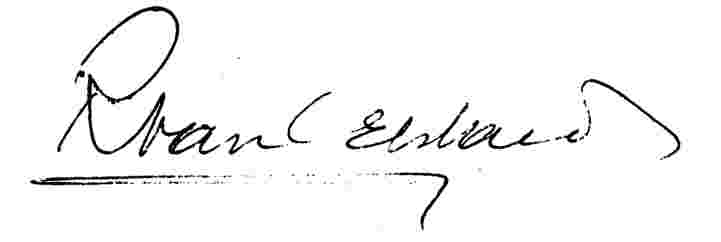



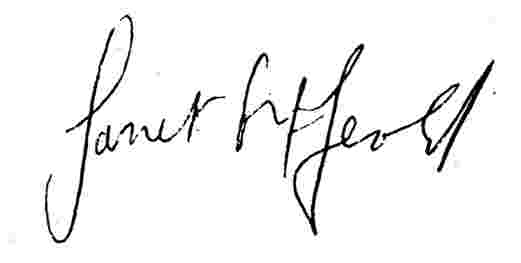
![]()

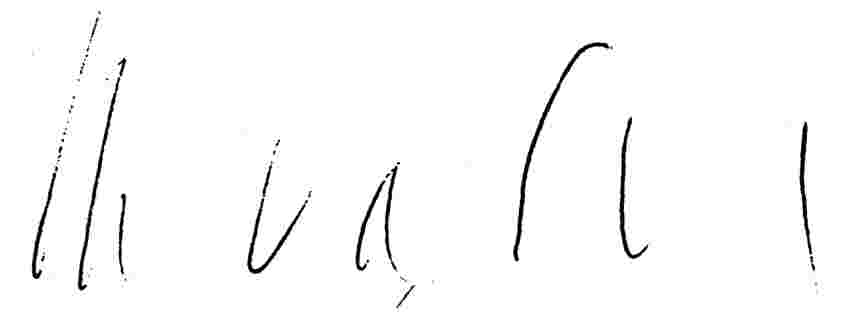

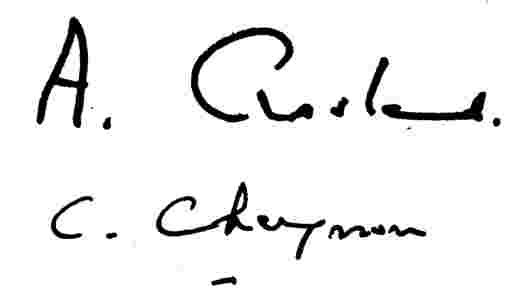

 ’.
’. ’.
’.